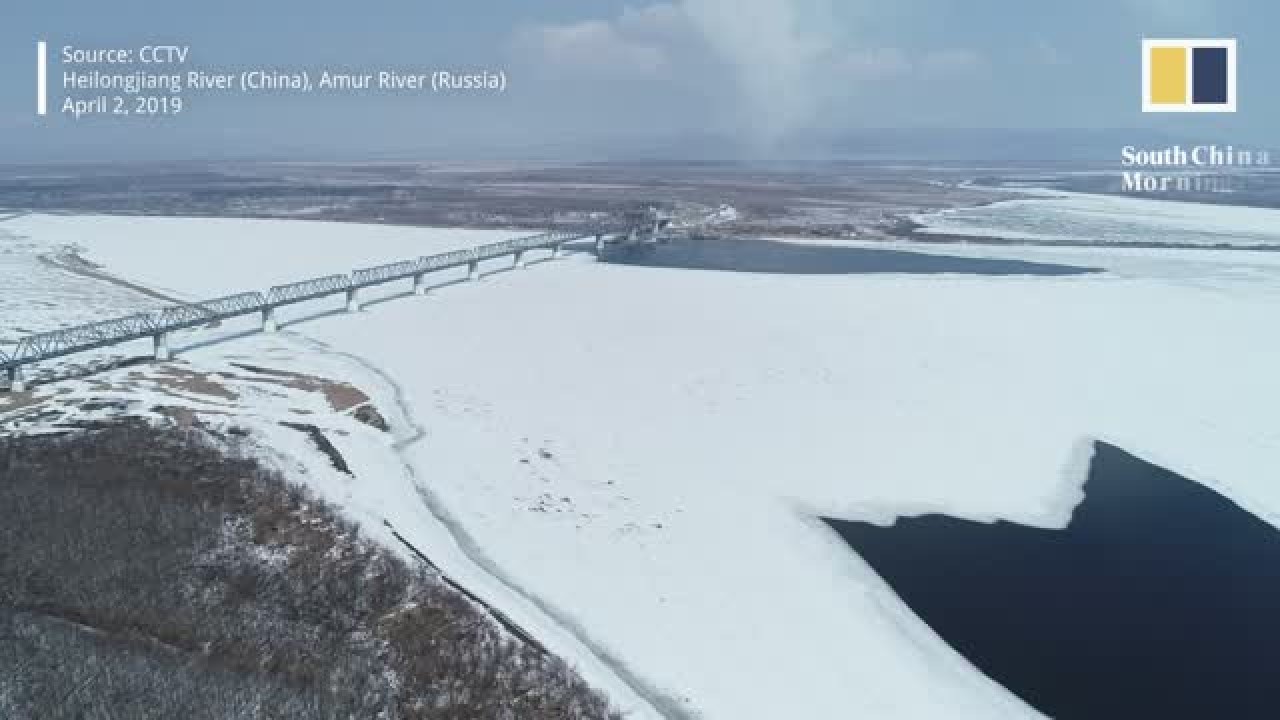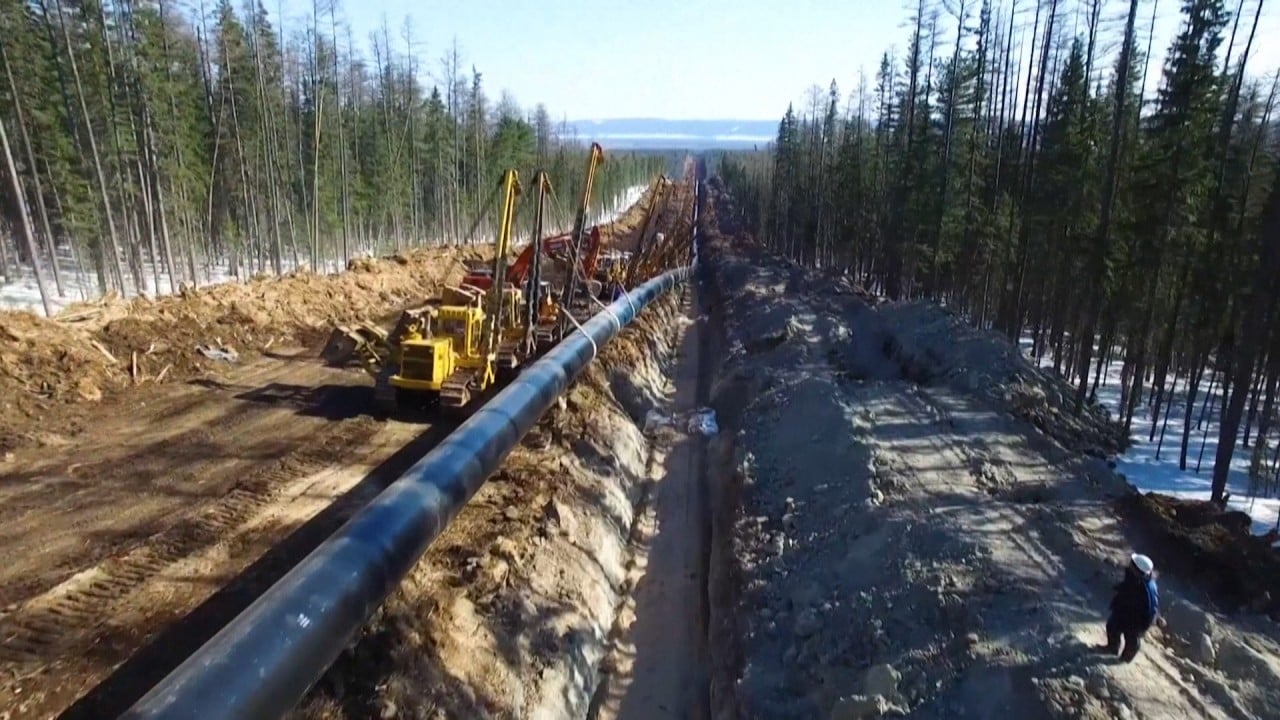
China-Russia railway bridge on track for first test run
- It is expected to be fully operational next year and likely to boost trade between the neighbours as they face growing pressure from the West
- Bridge will connect the countries across the Heilong River, and Russian Railways official says it will mainly be used to transport coal and iron ore
The 2.2km (1.4-mile) bridge will connect the countries across the Heilong River – known as the Amur in Russia – and the trial will run from August 26 to 28, according to project manager Lin Yonghan.
“That will involve a Russian train coming over to the Chinese side as a test to see if everything is OK,” Lin told Chinese tabloid Global Times on Wednesday.
The railway bridge is expected to be fully operational next year, Russian Railways deputy general manager Alexei Shilo confirmed on Tuesday, according to state-owned Sputnik News.
He said it would be mainly used to transport coal and iron ore.
“If we are talking about exported material, it will amount to about 8 million tonnes; the figure for imports will be … at about 400,000 tonnes,” Shilo said.
The railway bridge – with a designed annual cargo capacity of 21 million tonnes – is likely to significantly boost cross-border trade. It will mean iron ore can be transported from Russia’s resource-rich Far East to steel factories in China’s northeastern rust belt in a much shorter time – that trip will be less than 240km, instead of more than 1,000km.

01:06
China and Russia linked for first time by a cross-border rail bridge
The bridge – which cost US$355 million, split between the two sides – was proposed back in 2007. Work began in 2014 in Tongjiang, in China’s northeastern Heilongjiang province, and after delays it was completed last month. It stretches over the river to Nizhneleninskoye in Russia’s Far East.
That bridge, which also crosses the Heilong River, is 19.4km long and was built between 2016 and 2019. It is designed to handle 300,000 cargo and passenger vehicles a year, including 4 million tonnes of freight, according to the Russian government.

02:22
China and Russia turn on gas pipeline ‘Power of Siberia’ as they forge stronger energy ties
Artyom Lukin, an associate professor with the Far Eastern Federal University in Vladivostok, said progress on the two bridge projects after so many years could be seen as a breakthrough after repeated delays, mostly from Russia.
“Back then [when the projects were proposed] Russia did not see China as the top priority economic partner,” Lukin said. “Also, there were Sinophobia-tinged concerns that additional transport links could facilitate a trade and demographic invasion of the Russian Far East by Chinese.”
But he said escalating tensions with the West and China’s expanding market had changed the atmosphere. “China has emerged as Russia’s biggest market while fears of Chinese expansionism, albeit not disappearing completely, have taken a back seat to the need to strengthen economic ties with Beijing, especially given Russia’s confrontation with the West,” Lukin said.
He expected cooperation in the border region to continue as it was in both countries’ interests to boost trade.
According to official Chinese data, bilateral trade with Russia stood at US$107.77 billion in 2020 – well below their shared target of US$200 billion by 2024.
“Beijing’s stake in trade with Russia grows as China’s relations with the US and US allies continue to degrade,” Lukin said. “In particular, the new China-Russia overland transport links would come in handy for Beijing as it reduces its dependence on resources from Australia.”

